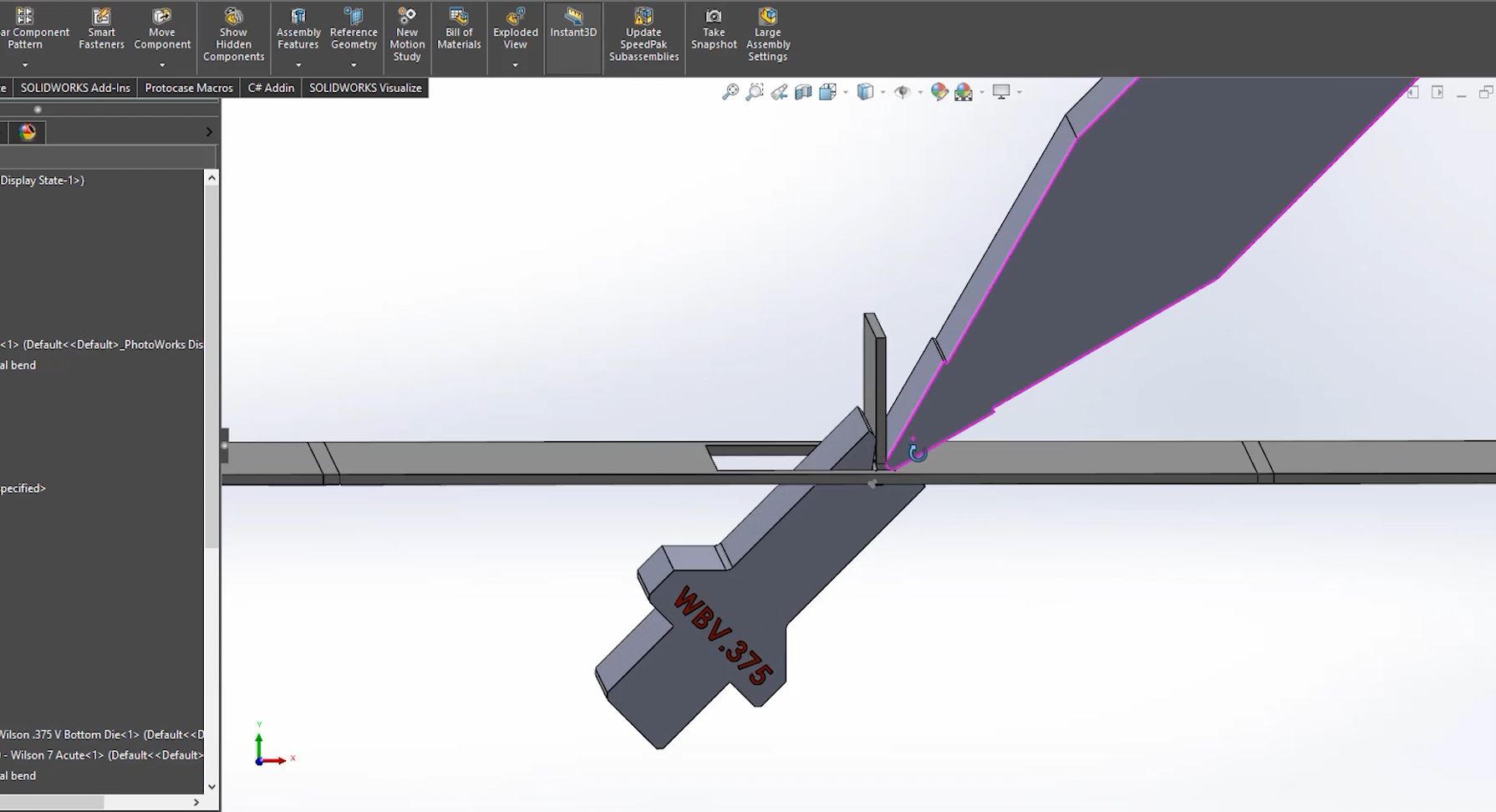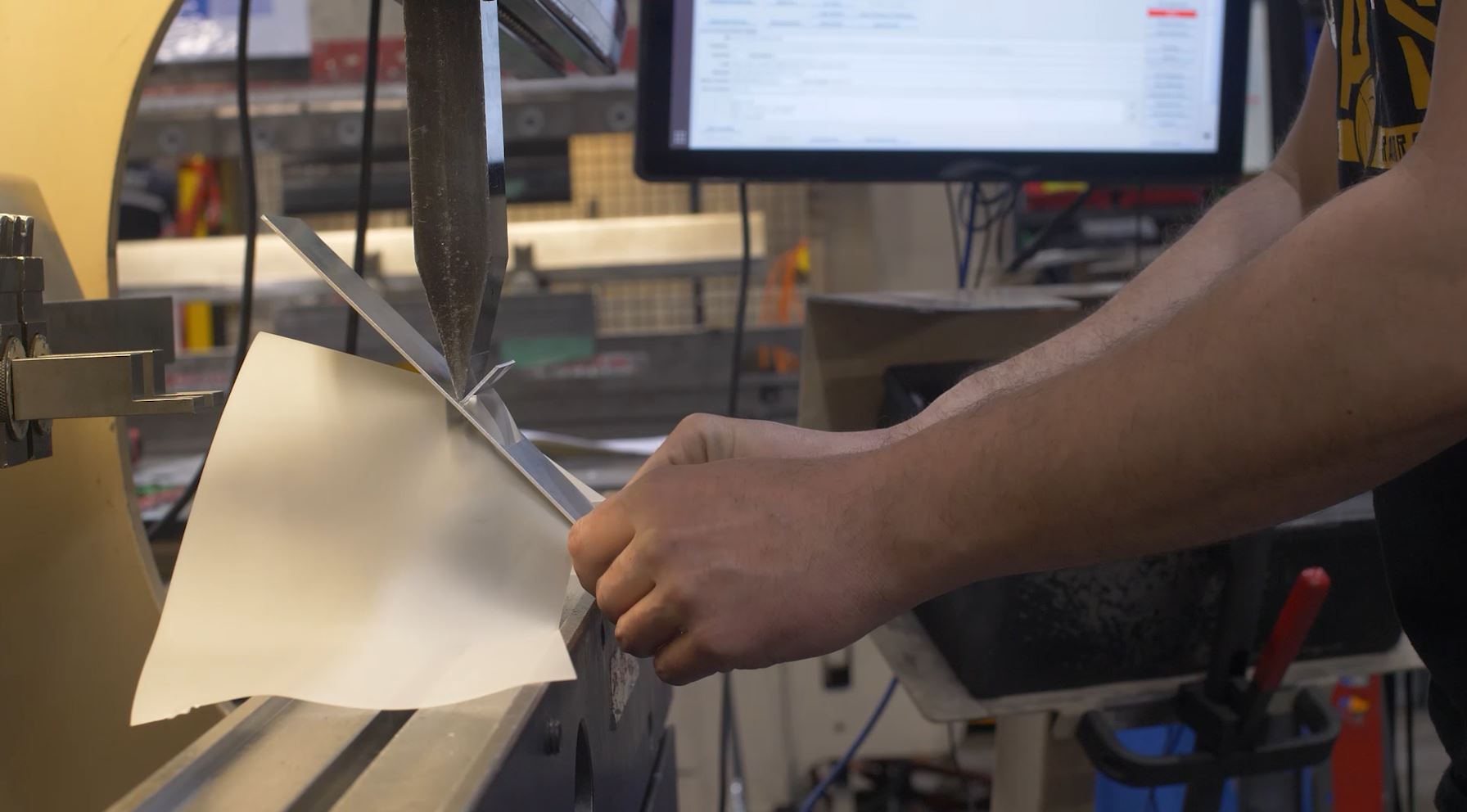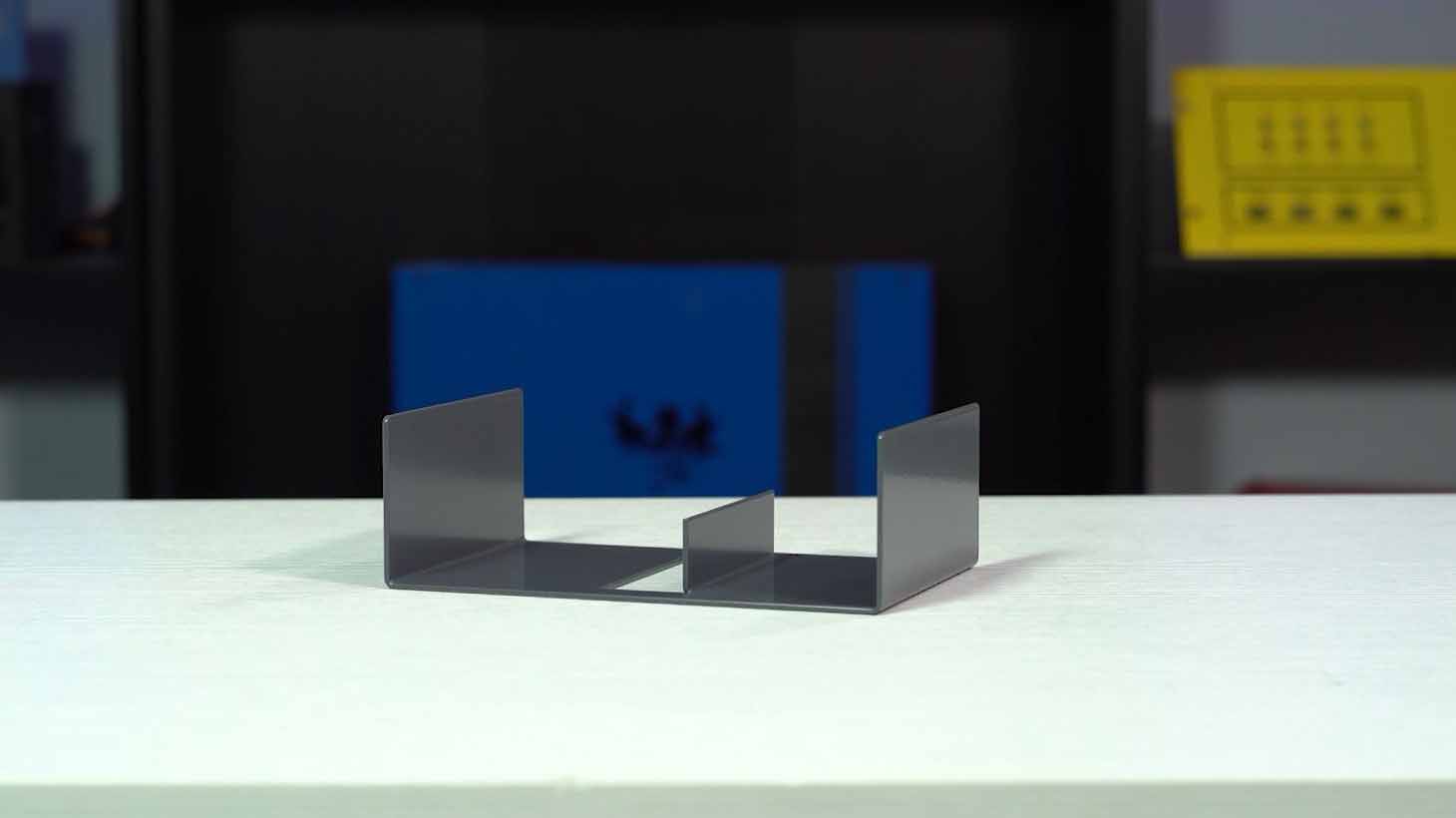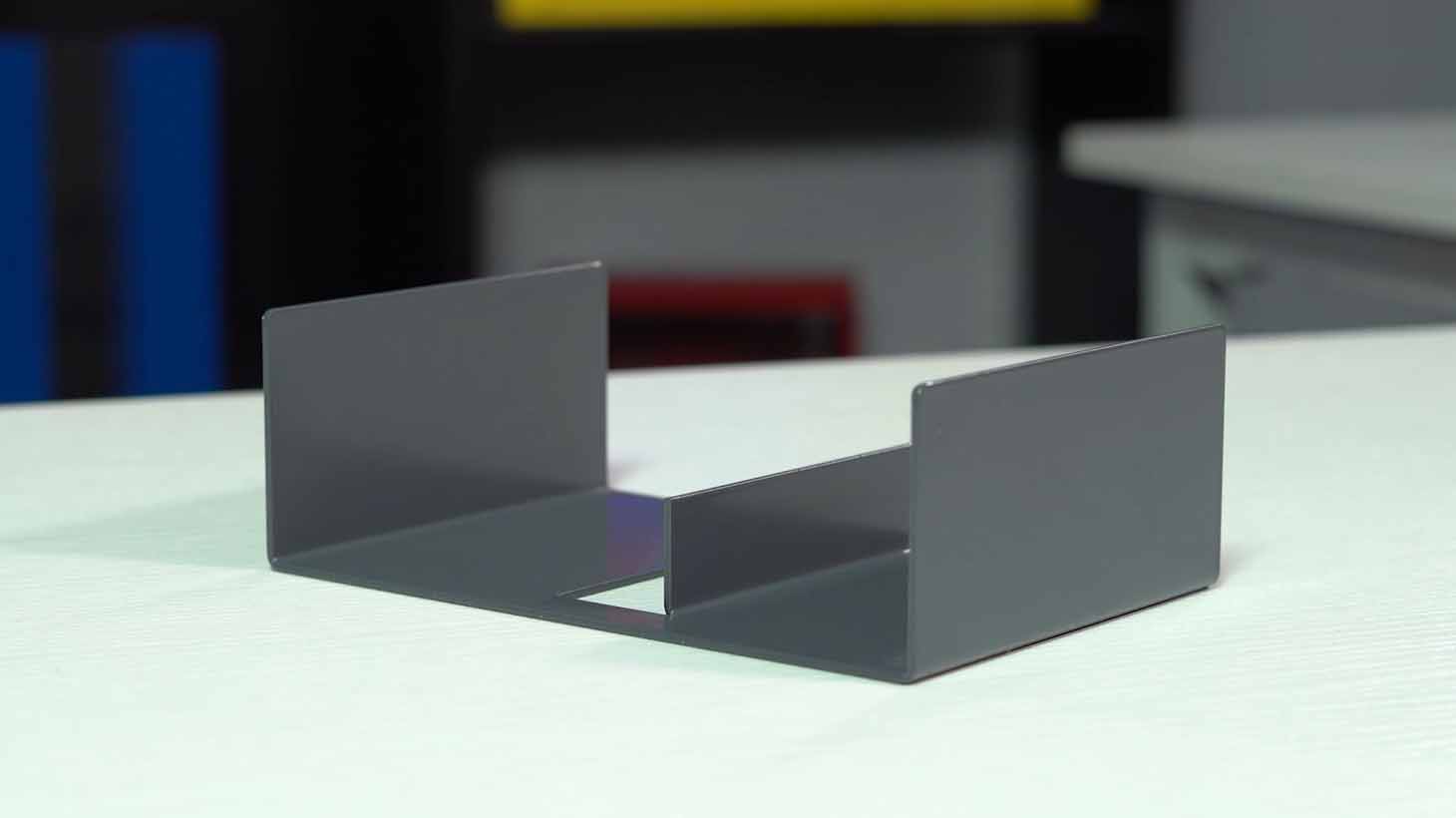Internal Bends
In sheet metal fabrication, bending is the critical operation for creating the custom parts required. Our Sheet metal is bent with a press brake or folder in order to form custom electronic enclosures and parts.
An internal bend is a bend that is placed on a particular area of a part where material surrounds the bend,
rather than a typical bend, which is placed at the outermost edge of a part.
An inset bend is very similar to an internal bend, except an inset bend is inset a small amount from the
part edge, instead of being completely inside the part profile.
Internal Bending Process
In order to create an internal bend, we section the upper and bottom tooling of the bending equipment in
order to line the tooling with the internal edge flange.
With the tooling sectioned, it will only bend the part of the material with which it makes contact.
Materials
Internal bends can be created on many types of sheet metal, including aluminum, cold rolled steel, galvanneal and stainless steel.
Constraints
In order to create an internal bend, the cutout of which the flange gets bent must be large enough to fit
half
of the bottom tooling that will be used.
The bend width must be smaller than the smallest die available.
Our Engineering & Design Services can access your design to ensure the internal bend in your design is
achievable.
Finishes
Parts with internal bends can be treated with any of our finishes, so long as the part meets the minimum and maximum dimensions for the particular finish you choose.





